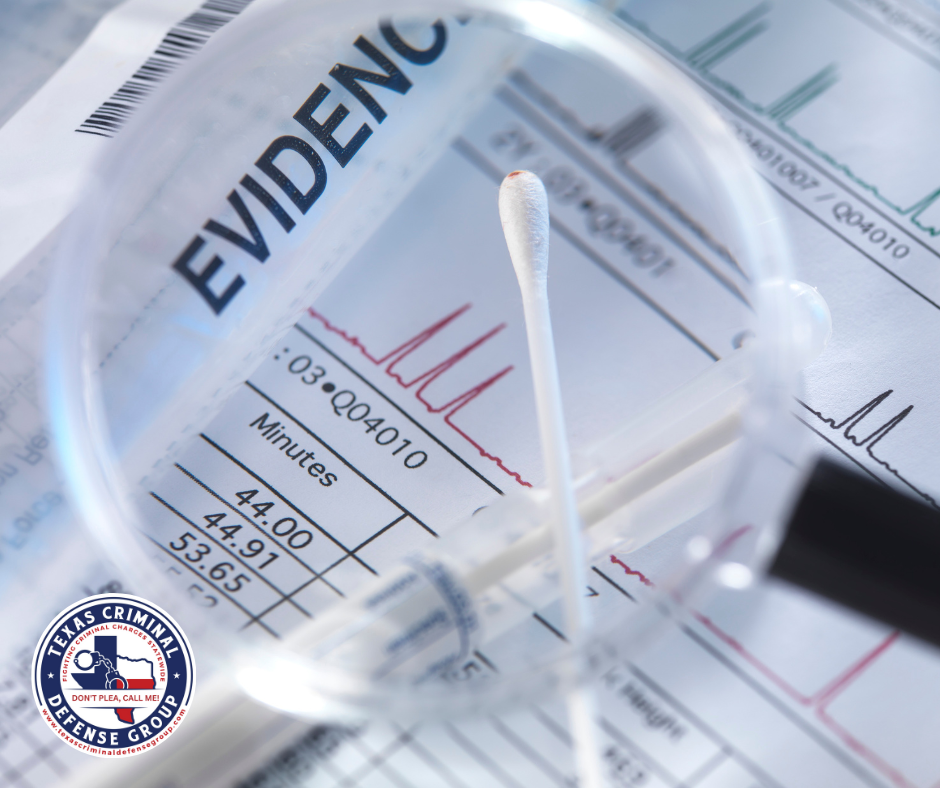
How DNA Evidence Revolutionized Criminal Cases
DNA has changed the landscape of criminal investigations, offering hope and justice in ways we once thought impossible. In Texas, this powerful tool serves as a beacon for the wrongfully accused, helping to reveal the truth behind the most challenging cases.
This blog will take you through the essentials of DNA—what it is, how it’s used as evidence in the legal system, and the critical role it plays in defending the accused. Join us as we unravel the science and stories behind this crucial evidence, highlighting its impact on justice and the human lives affected by it.
What is DNA?
DNA, or deoxyribonucleic acid, is the genetic material that carries instructions for how living things grow and function. It’s found in the cells of all living organisms. Scientists can create a unique DNA profile for a person by analyzing their DNA. While most human DNA is the same, a tiny portion (0.1%) is different for each person, which is what makes everyone unique (except identical twins, who share identical DNA). DNA testing used in criminal cases is about 99.99% accurate when conducted properly. Because DNA is unique to each person, it can be used to connect a suspect to a crime or prove that they were not involved.
DNA Evidence
DNA evidence is a highly reliable method of identifying individuals because each person has a distinct DNA profile (except for identical twins). It’s often compared to fingerprints in terms of accuracy in solving crimes. Even a small number of human cells can provide enough DNA for identification.
DNA used as evidence is not just limited to identifying suspects. It can:
- Place a person at a crime scene or disprove their claim of not being there.
- Discredit self-defense arguments by linking a weapon to the suspect.
- Shift a case from being about an alibi to one of consent in certain situations.
Additionally, DNA evidence has been instrumental in overturning wrongful convictions and freeing innocent individuals.
A Brief History of Forensic DNA Evidence
The use of DNA in criminal investigations began in the mid-1980s. Scientists found that certain parts of DNA had repeating patterns that were different for each person (except identical twins). This discovery made it possible to identify individuals using a method called Restriction Fragment Length Polymorphism (RFLP).
RFLP was very accurate, but it required a large amount of DNA to work properly. This was sometimes a problem when only small traces of DNA were found at crime scenes.
In the 1990s, a new method called Polymerase Chain Reaction (PCR) was developed. PCR could test very small amounts of DNA by copying (or amplifying) it. This made DNA testing much easier, even when only tiny samples were available. PCR quickly became the standard method for forensic DNA analysis because it’s both accurate and efficient.
The Impact of DNA Evidence in Criminal Cases
In 1986, forensic DNA analysis was used for the first time in the UK to help solve two rape-murder cases. Dr. Alec J. Jeffreys from the University of Leicester tested the DNA and proved the suspect was innocent. This event changed how DNA was used in criminal cases.
DNA evidence has since shown that innocent people can be wrongly convicted. According to The Innocence Project:
- Since 1986, DNA has declared 375 people innocent in 37 states
- The average age of wrongfully convicted people is 26.6, and they are usually exonerated at 43
- 21 of those exonerated were on Death Row
- 44 people had pleaded guilty to crimes they didn’t commit
- 69% of these cases involved mistakes in eyewitness identification
- 43% had issues with faulty forensic science
- 29% involved false confessions
- 17% relied on unreliable informants
This shows how vital DNA is in correcting wrongful convictions.
Types of DNA Evidence and How It’s Used in Investigations
DNA is a form of biological evidence that falls under physical evidence and is used to confirm or deny a person’s involvement in a crime. Common types of DNA evidence include:
- Bloodstains
- Blood
- Bodily fluids
- Saliva
- Urine
- Skin cells
- Trace DNA
Forensic labs analyze these biological samples to create a DNA profile that identifies the person the samples came from.
If investigators have a suspect, they can collect their DNA sample and compare it to the evidence found at the crime scene. Additionally, investigators can use DNA databases to help identify suspects, including the Combined DNA Index System (CODIS), which links DNA evidence across the United States.
How is DNA used as Evidence in Criminal Investigations?
DNA is often referred to as the “golden standard” of forensic science due to its exceptional reliability in criminal investigations. It is instrumental in identifying suspects, connecting them to crimes, and exonerating innocent individuals. Today, DNA evidence is a critical component in nearly every criminal case.
What is DNA Profiling?
DNA profiling is the process of examining biological samples, like blood or hair, collected from a crime scene and comparing them to known DNA profiles. This method helps law enforcement agencies accurately identify suspects and determine if they were involved in the crime.
When investigators create a DNA profile, they check it against a database of DNA from individuals who have prior convictions. This comparison can quickly point to potential suspects.
DNA profiling is especially useful when there are samples left at crime scenes. It is crucial in cases where the victim is deceased, as the attacker’s DNA may still be present. This technique can also link several suspects to the same crime, helping to clarify what occurred.
To collect DNA evidence, investigators need a sample from the suspect. They can obtain this voluntarily through a blood or hair sample. If a suspect refuses to provide a sample, investigators can get a court order to collect it, maintaining the chain of custody for the evidence collected.
Arrested? Don’t Plea, Call Me!
DNA plays a vital role in the Texas criminal justice system, serving as a powerful tool for identifying suspects and ensuring justice is served. Its ability to accurately connect individuals to crimes or exonerate the innocent has transformed the way law enforcement approaches investigations. As we’ve seen, DNA profiling not only helps solve cases but also highlights the importance of reliable evidence in preventing wrongful convictions.
If you or someone you know is facing criminal charges in Texas, it’s crucial to have knowledgeable defense attorneys who understand the complexities of DNA evidence and its implications for your case. Don’t navigate this challenging time alone—contact us today for a consultation. Let us help you fight for your rights and seek the justice you deserve.
